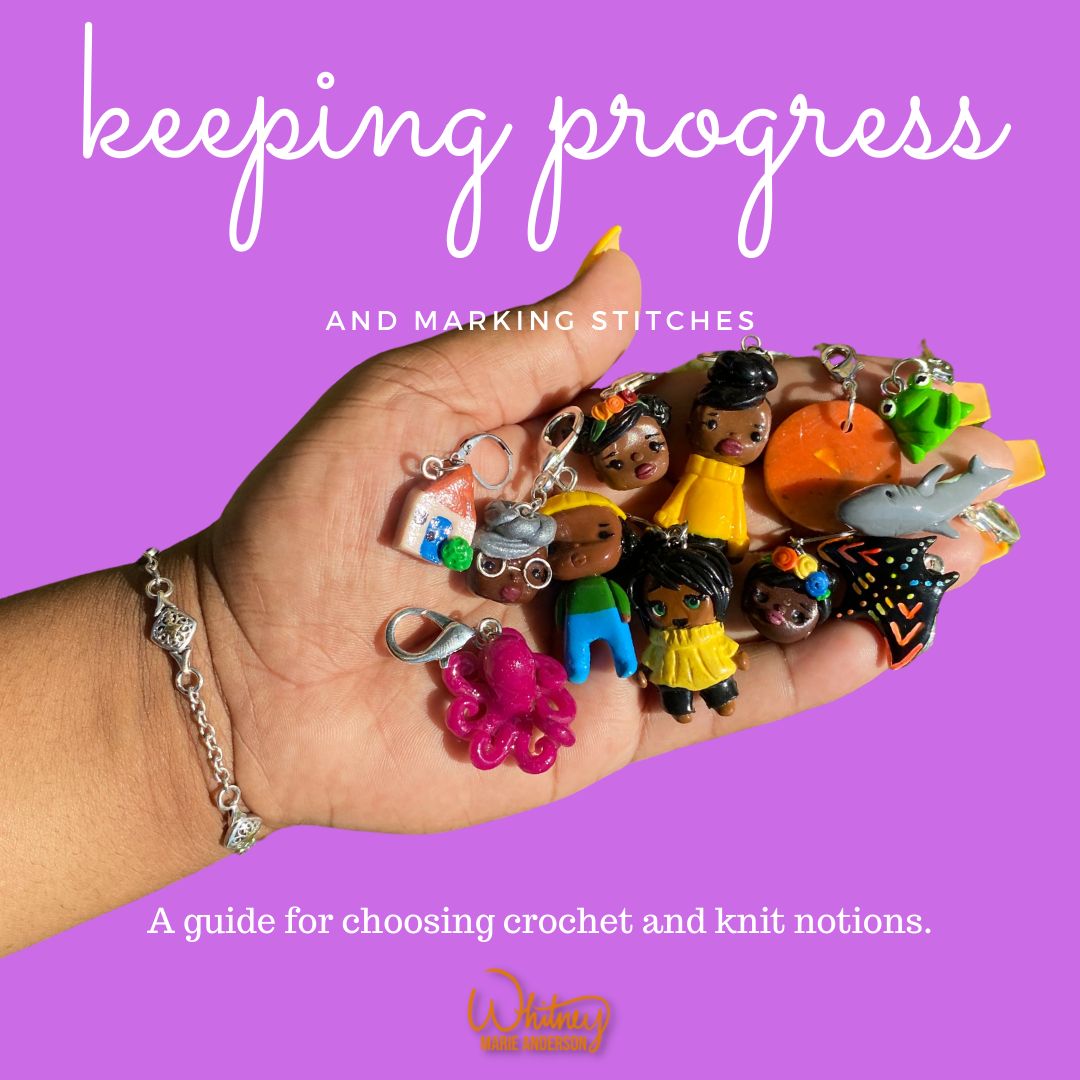If you knit or crochet, you may have heard the terms progress keeper or stitch marker being used interchangeably. In fact, even I use them interchangeably, though these notions do serve different purposes.

Pictured above, stitch markers/progress keepers that I've made over the years.
What is a stitch marker?
There is a common misconception that stitch markers are mainly used for crochet. They can actually be used for both knit AND crochet! A stitch marker typically has a closed loop (or a large lobster clasp) when being used for knit. For crochet, there must be an opening for a stitch marker, as it will be hooked into the stitch rather than onto a needle as it is with knit. There are mathematical components to both knit and crochet, so stitch markers serve as a visual reference that takes the place of repetitive stitch counting and reduces the chance of errors.

Four stitch markers being used for knit (top) and one progress keeper (bottom)
What is a progress keeper?
Another misconception is that progress keepers are a knitting thing. Once again, like stitch markers, they can be used for both crochet and knit! A progress keeper (aka PK) serves a different purpose than a stitch marker does. Fiber artists use PKs to track their progress over a certain amount of time. You choose the amount of time you want your PK to track, but most people move their keepers up after each session of knitting or crocheting. It's really nice to see how much progress you've achieved over a specific amount of time! I don't crochet enough these days to show an example of my notions being used for crochet. I've got to make that happen soon!
So...do you NEED stitch markers and progress keepers?
As a person that both makes and sells progress keepers and stitch markers, my next phrase may shock you. No! You don't "need" stitch markers or progress keepers. I've seen plenty of frugal fiber artists get by with using things like safety pins, paper clips, and even soda can tabs! I will say this though, using a pretty or cute charm as a stitch marker/progress keeper certainly is motivational! I know this is true for myself and for a lot of my customers.
I've gotten to the point that starting a new project makes me want new charms, and making new charms makes me want to start a new project. What a cycle, haha! While working on my projects, watching my progress keeper grow further away from my hands helps me to see I'm actually doing something, even when I feel like I don't have anything to show for the time I've spent. I consider the charms that I create to be luxury items, in the sense that they are not needed, but they are fun to have and create.
What kind of finish should you get?
The finish can affect the use of your charm. If you decide stitch markers and progress keepers are your thing, you may not know which one to get. In my store I offer 3 finishes that each serve different purposes.

Jump Ring - A closed ring, recommended for use as a knitting stitch marker.
Lobster Clasp - A Clasp that opens and closes, recommended for use as either a stitch marker or a progress keeper.
Leverback hook - A hook with a lever closure, recommended for use as a stitch marker, a progress keeper, or EARRINGS!
...
Because of their versatility, you'll find that I refer to them as charms most of the time. This usually allows people to decide how they will use their notions, rather than me telling them what to do with them. I've even seen the charms I create being used as pendants and purse charms! Overall, notions can make your crafting less frustrating, and we all can benefit from that!
Thank you so so much for reading this blog! I appreciate you! Please let me know in the comments if/how you use your notions!
-Whit


